
How to Use soil sensor : Examples, Pinouts, and Specs
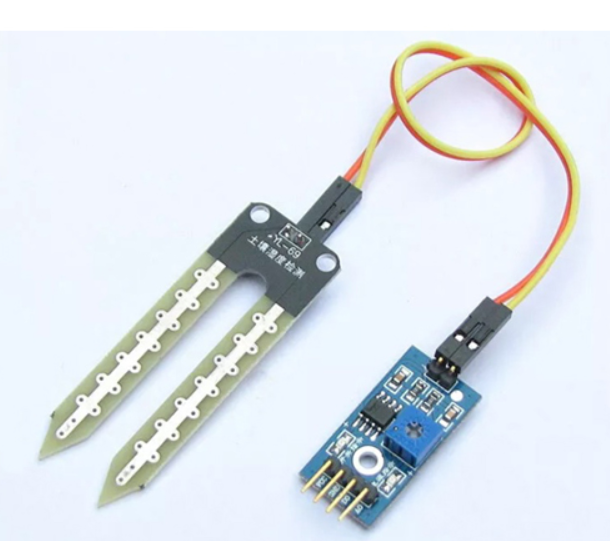
 Design with soil sensor in Cirkit Designer
Design with soil sensor in Cirkit DesignerIntroduction
The Micron YL-69 Soil Sensor is a device designed to measure the moisture level in soil. It is commonly used in agricultural and gardening applications to ensure optimal watering. By providing real-time data on soil moisture, the YL-69 helps in maintaining the health of plants and optimizing water usage.
Explore Projects Built with soil sensor
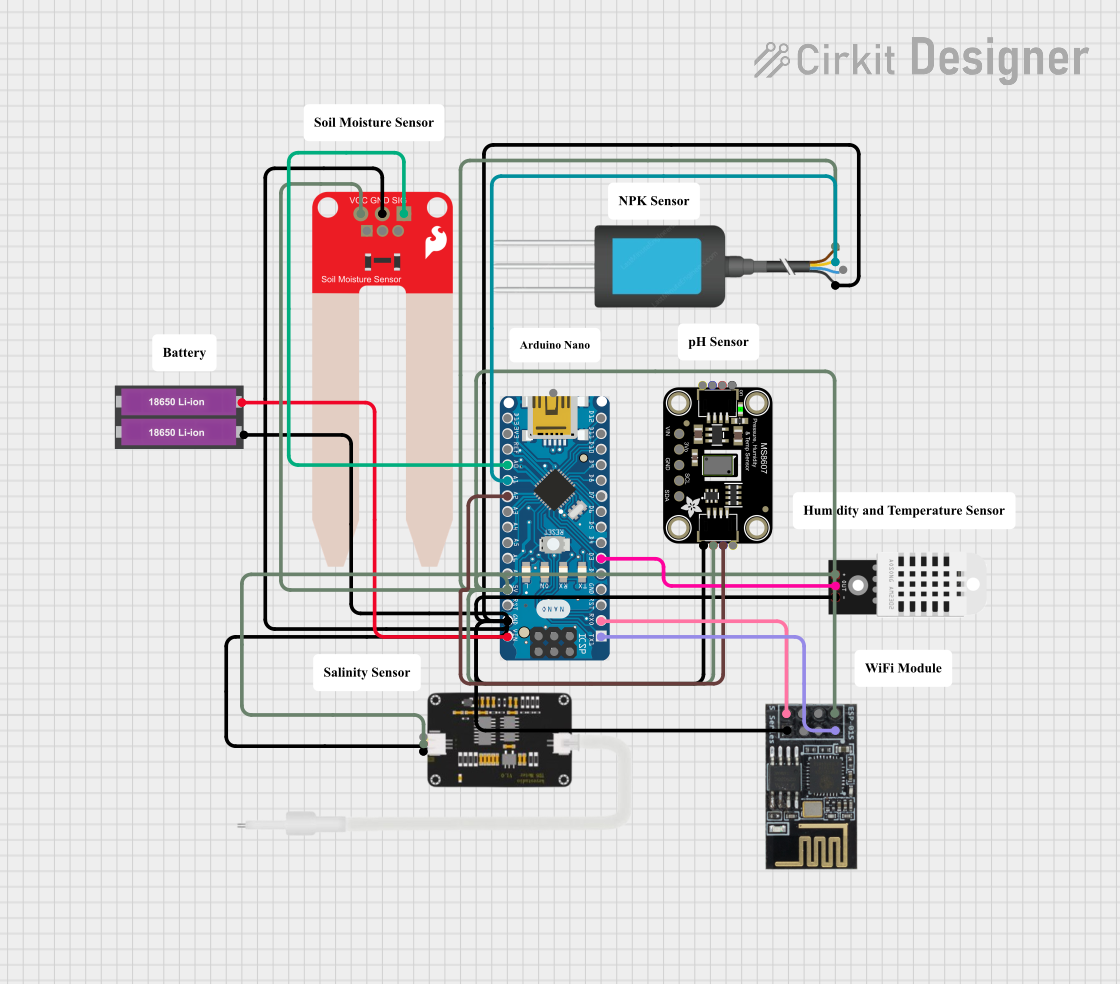
 Open Project in Cirkit Designer
Open Project in Cirkit Designer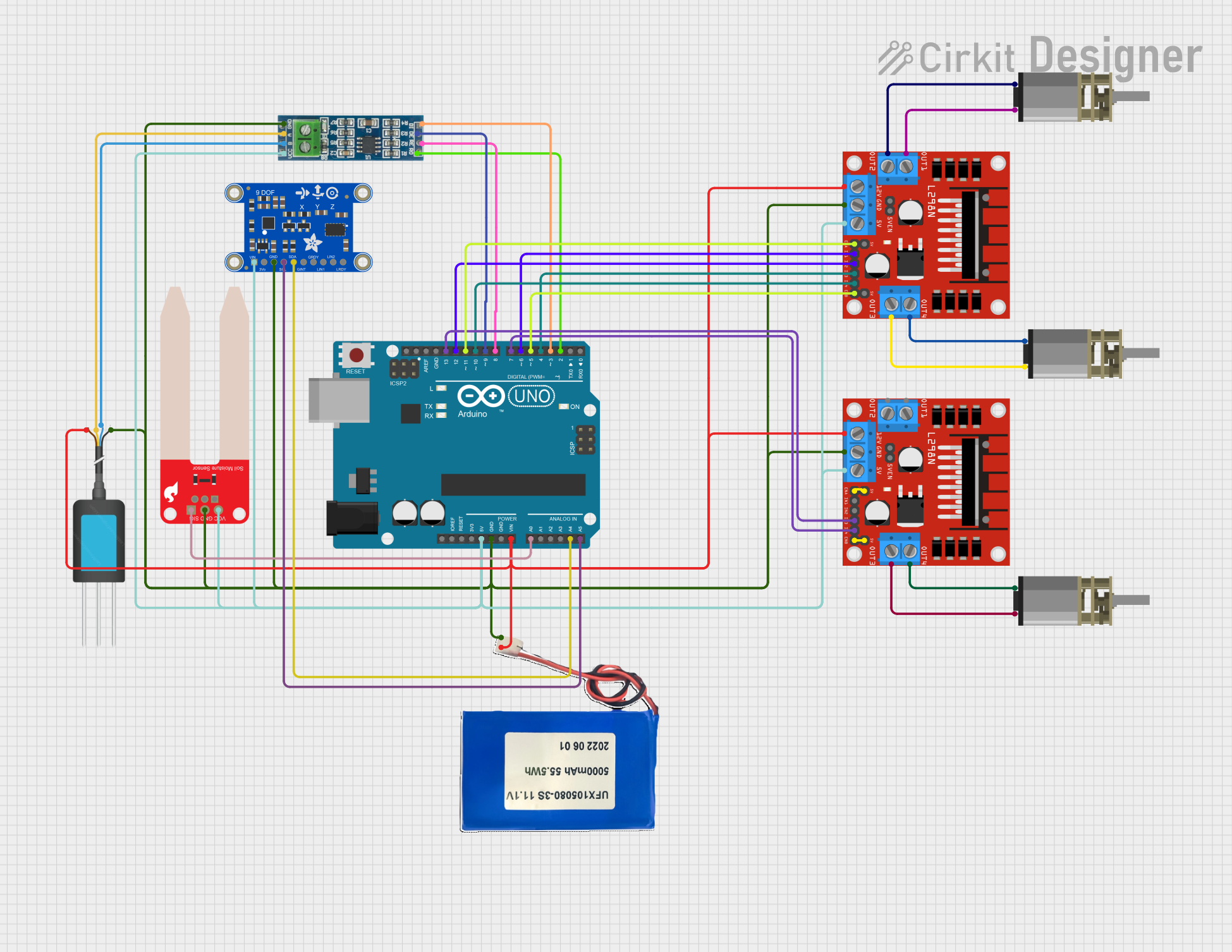
 Open Project in Cirkit Designer
Open Project in Cirkit Designer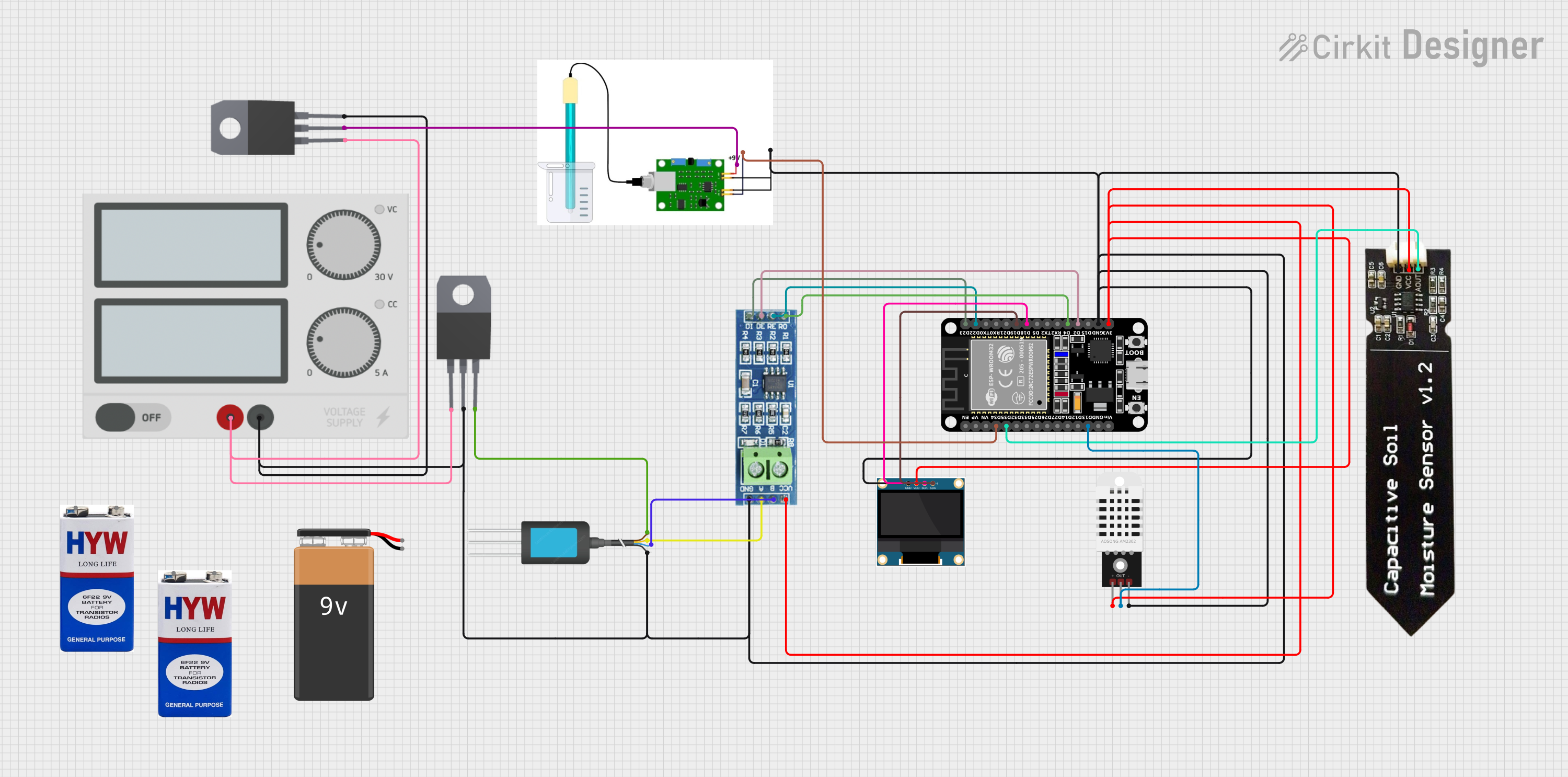
 Open Project in Cirkit Designer
Open Project in Cirkit Designer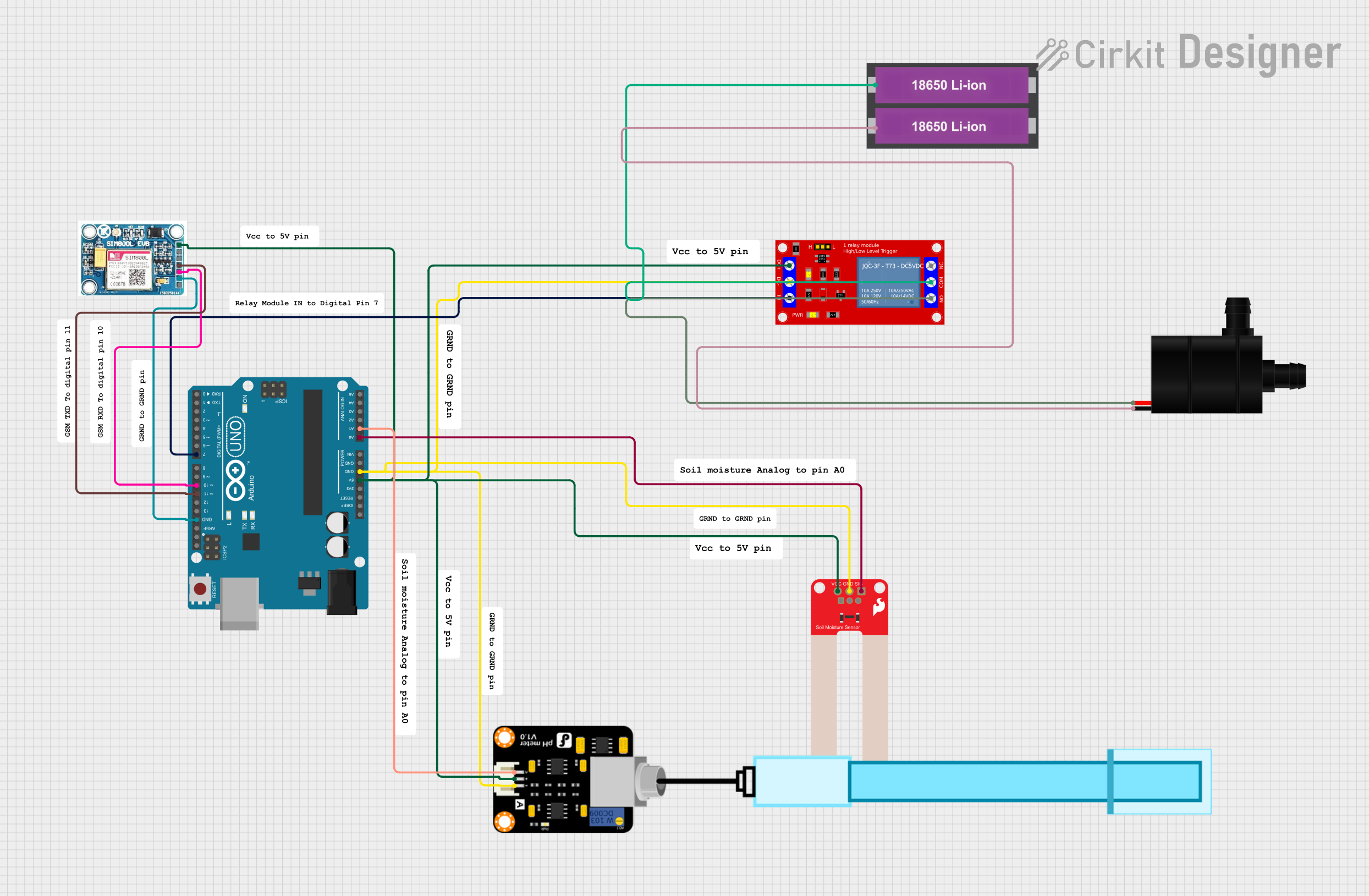
 Open Project in Cirkit Designer
Open Project in Cirkit DesignerExplore Projects Built with soil sensor

 Open Project in Cirkit Designer
Open Project in Cirkit Designer
 Open Project in Cirkit Designer
Open Project in Cirkit Designer
 Open Project in Cirkit Designer
Open Project in Cirkit Designer
 Open Project in Cirkit Designer
Open Project in Cirkit DesignerTechnical Specifications
Key Technical Details
| Parameter | Value |
|---|---|
| Operating Voltage | 3.3V - 5V |
| Output Voltage | 0V - 4.2V (analog) |
| Current Consumption | < 20mA |
| Interface | Analog |
| Operating Temperature | -40°C to 85°C |
| Dimensions | 60mm x 20mm x 5mm |
Pin Configuration and Descriptions
| Pin Number | Pin Name | Description |
|---|---|---|
| 1 | VCC | Power supply (3.3V - 5V) |
| 2 | GND | Ground |
| 3 | AOUT | Analog output (voltage proportional to soil moisture) |
Usage Instructions
How to Use the Component in a Circuit
- Power Supply: Connect the VCC pin to a 3.3V or 5V power supply.
- Ground: Connect the GND pin to the ground of the power supply.
- Analog Output: Connect the AOUT pin to an analog input pin on a microcontroller (e.g., Arduino UNO).
Example Circuit Diagram
Arduino UNO
+---------+
| |
| A0 |<------ AOUT (YL-69)
| |
| 5V |<------ VCC (YL-69)
| |
| GND |<------ GND (YL-69)
+---------+
Important Considerations and Best Practices
- Calibration: Calibrate the sensor for your specific soil type to get accurate readings.
- Placement: Insert the sensor into the soil at the root level of the plants for best results.
- Protection: Protect the sensor from prolonged exposure to water to prevent corrosion.
Sample Arduino Code
// Include necessary libraries
void setup() {
Serial.begin(9600); // Initialize serial communication at 9600 baud rate
pinMode(A0, INPUT); // Set A0 as an input pin
}
void loop() {
int sensorValue = analogRead(A0); // Read the analog value from the sensor
float voltage = sensorValue * (5.0 / 1023.0); // Convert the analog value to voltage
Serial.print("Soil Moisture Voltage: ");
Serial.println(voltage); // Print the voltage to the serial monitor
delay(1000); // Wait for 1 second before taking another reading
}
Troubleshooting and FAQs
Common Issues Users Might Face
- Inaccurate Readings: The sensor may give inaccurate readings if not calibrated properly.
- Corrosion: Prolonged exposure to water can cause the sensor to corrode, affecting its performance.
- No Output: If there is no output, check the connections and ensure the sensor is powered correctly.
Solutions and Tips for Troubleshooting
- Calibration: Use a known moisture level to calibrate the sensor. Adjust the readings in your code accordingly.
- Corrosion Prevention: Use a protective coating on the sensor probes to prevent corrosion.
- Connection Check: Ensure all connections are secure and the power supply is stable.
FAQs
Q: Can the YL-69 be used with other microcontrollers? A: Yes, the YL-69 can be used with any microcontroller that has an analog input pin.
Q: How deep should the sensor be placed in the soil? A: The sensor should be placed at the root level of the plants for accurate moisture readings.
Q: How often should the sensor be calibrated? A: Calibration frequency depends on the soil type and environmental conditions. Regular calibration is recommended for best results.
This documentation provides a comprehensive guide to using the Micron YL-69 Soil Sensor. Whether you are a beginner or an experienced user, following these instructions will help you effectively measure soil moisture and optimize your watering practices.